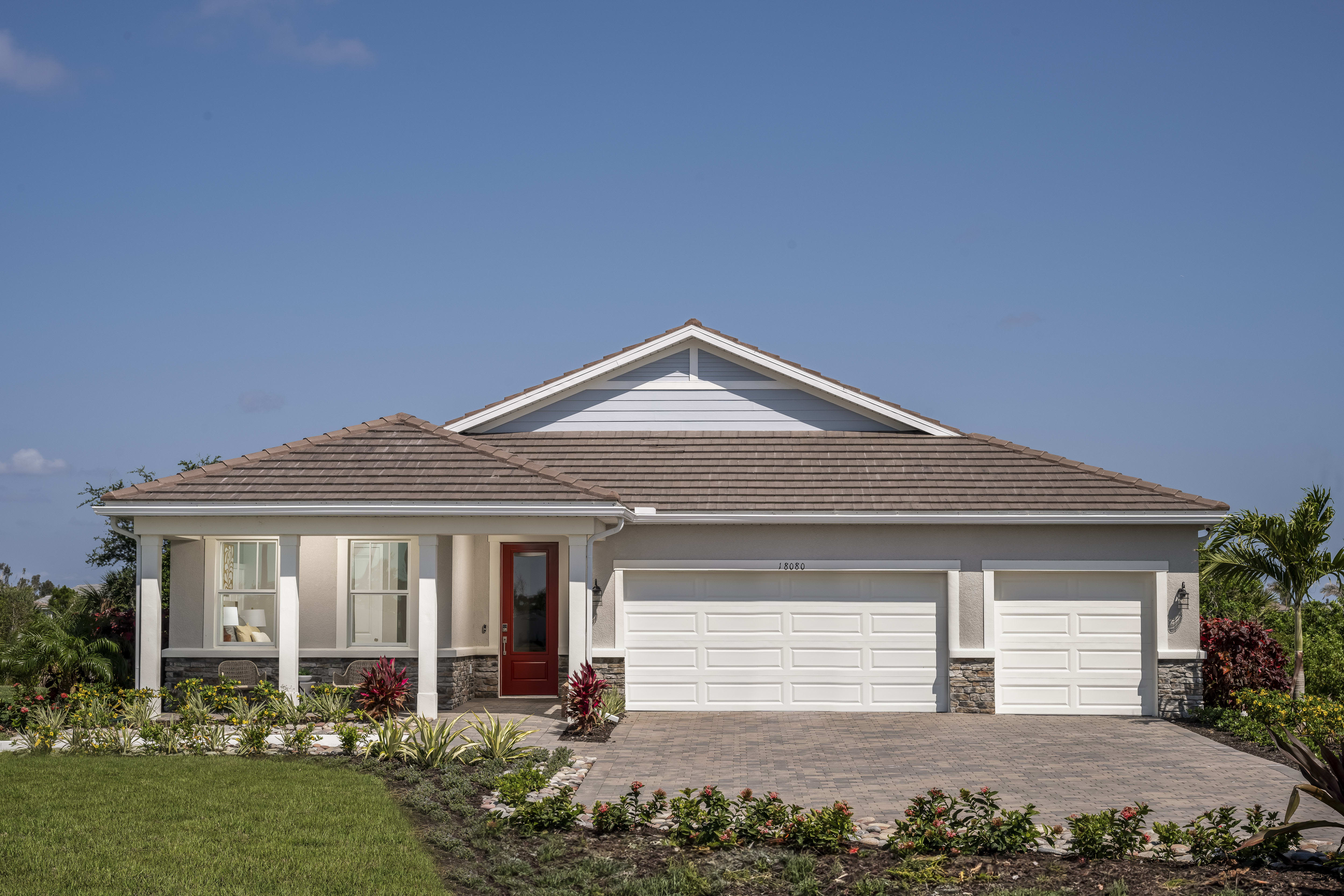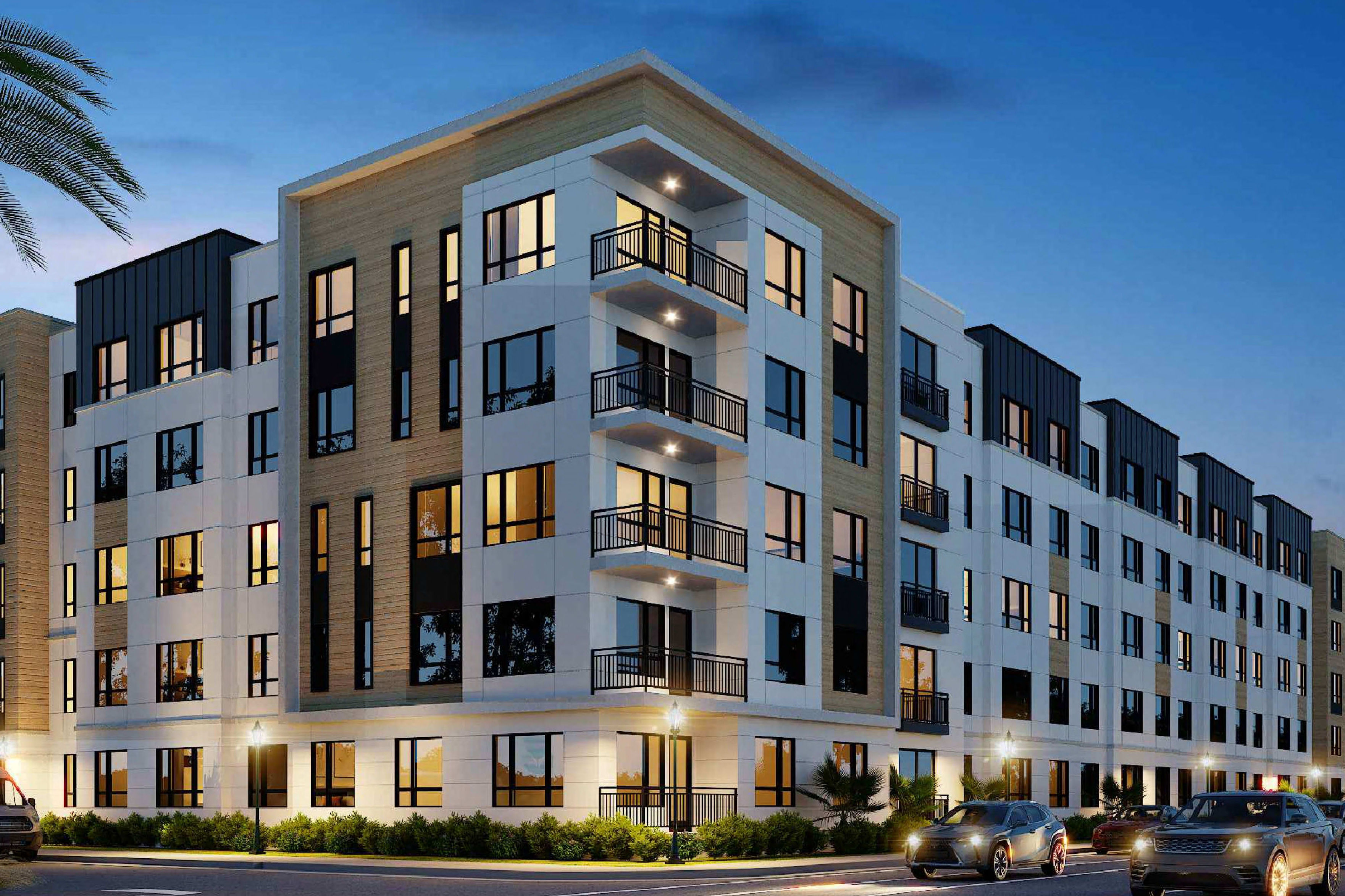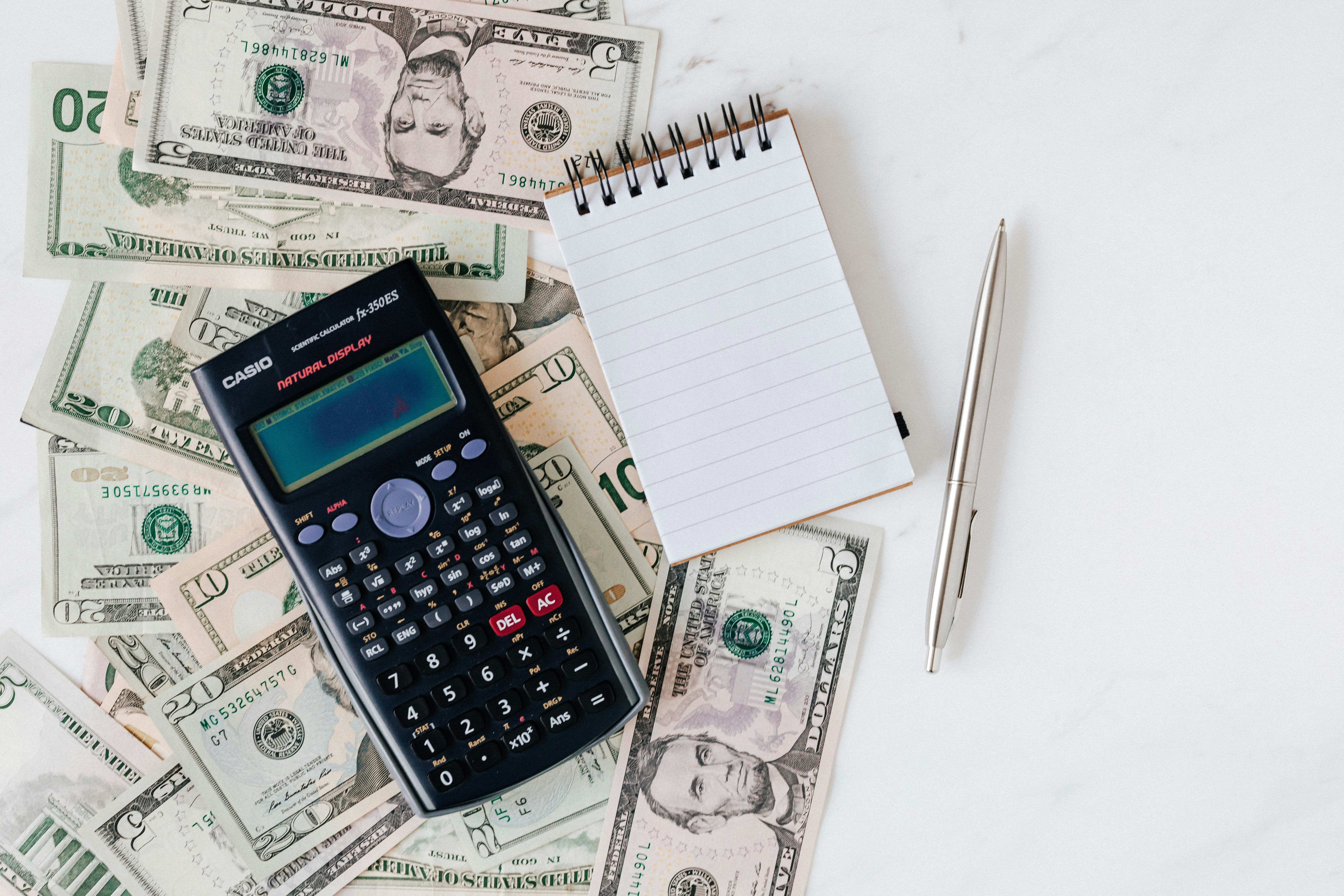Meet Chris Brown, the Deal Addict
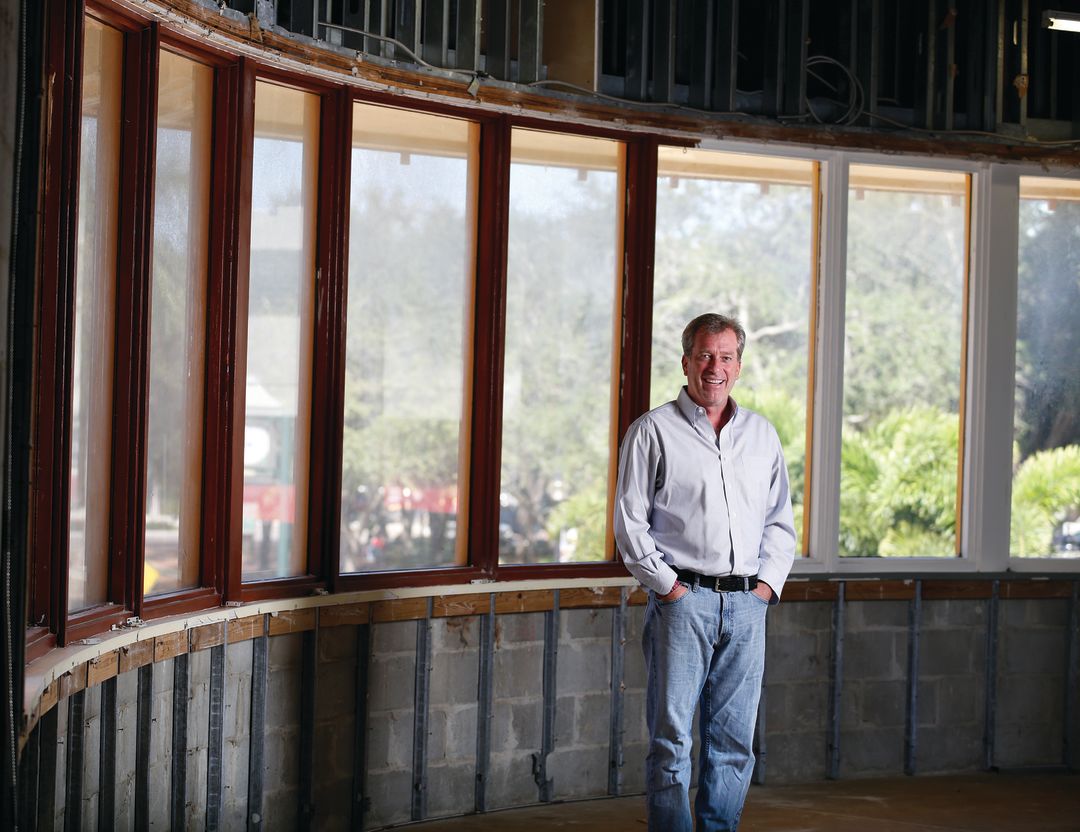
Real estate investor Chris Brown on the unfinished second floor of Kress Plaza, one of his downtown Sarasota properties.
In the span of a decade, from 1994 to 2004, Chris Brown went from sleeping on the couch in his parents’ condo with less money in his bank account than he owed on his cell phone bill to owning $8 million to $10 million in Sarasota properties, from a strip mall and apartment complex to a number of homes.
Then, in 2004, he had an epiphany: The market he had ridden so far, so fast was headed over a cliff.
“I told my wife, Michele, that none of it made sense,” Brown recalls. “People were paying $20,000 for mortgages on properties that were earning only $18,000, and the banks kept lending them money. I said, ‘We have to sell everything.’ Within 90 days, we had, even our own house.”
It was 2004, near the top of one of the frothiest real estate markets in Florida’s history. Flush with cash, seasoned at doing deals and in good standing with lenders, Brown capitalized on the real estate fallout of the Great Recession.
Today, Brown is one of Sarasota’s most prominent real estate investors, owning prime properties in Siesta Key Village, including the iconic Beach Club, the Hub Baja Grill, the Cottage and the former Blu Smoke, which he is redeveloping. He also owns the restaurants on the properties.
“I started buying in 2005 and now have two corners of the only intersection in the village,” says Brown, who also owns the nearby Morton’s Siesta Key Market and Siesta Key Village Hardware.
Now Brown is staking a claim on downtown Sarasota. His portfolio includes part of the historic Kress Building, now occupied by Fit2Run, as well the nearby Smokin’ Joes bar. He is a part owner of Indigo Hotel. And, in the past three years, Brown has assembled a rare Sarasota jewel: an entire block at 1700 Main Street, ripe for redevelopment.
“I haven’t seen him make any mistakes,” says John Harshman of Harshman and Co. Inc., a downtown Sarasota commercial real estate firm. “He’s able to recognize opportunity and to accept risk. You have to be impressed with what he’s done.”
Brown didn’t always buy at the bottom of the market. He bought the Beach Club and other Siesta Key properties in 2005 when prices were still rising. But he said those prices were validated because the properties were insulated by their proximity to one of the world’s most celebrated beaches.
“You can’t predict peaks and valleys,” Brown says. “But you can recognize when the numbers don’t make sense. In 2004 and 2005, they didn’t make sense to me. By 2011-12, my phone was ringing off the hook with bankers trying to make deals with me. [I] turned out to be in the right place at the right time.”
That timing has allowed Brown to sift through the ashes of the real estate meltdown to find bargains unimaginable a decade ago.
Take Mad Moe’s Sports Pub (named after Brown’s two daughters, Madison and Morgan). In the mid-2000s, the former owner invested $900,000 in building a pastry shop on the property at 106 N. Tamiami Trail in Osprey. It quickly went out of business and was on the market for years until Brown swooped it up in 2014 for $150,000, turning it into one of the most popular sports pubs in the area. He had to buy the neighboring properties just to handle the overflow parking.
As with his Siesta Key restaurants, Brown is more than a property owner at Mad Moe’s. He owns the restaurant. “I work with good people who know the restaurant business,” he says. “It’s worked out well.”
Downtown Sarasota offers new possibilities. He paid $1 million for the former Firestone auto care center on Main Street, about $74 a square foot, the final piece in consolidating the square block.
“That was a good price for that site,” says Harshman. “I would have priced it higher.”
Taken together, the 1700 Main properties could be redeveloped into 65 condos, considerable retail, a hotel or a combination of all of those things.
“I’ve been told that spot is the connector between upper and lower Main Street,” Brown says. “It’s been relatively quiet—too quiet. It has a lot of potential. Let’s just say I’m intrigued by the possibilities.”
Starting low, aiming high
Wearing a pinstriped dress shirt with sleeves rolled to the elbows and khaki shorts, Brown looks younger than his 51 years as he slides into a booth at Patrick’s 1481 restaurant. He has an easy laugh and is self-effacing about the trappings of success, including the charcoal gray Porsche 911 parked outside on Main Street.
“When I pulled into the driveway after buying that car, my wife said, ‘Chris, I’m really sorry to hear about your penis,’” Brown says, laughing. “I’m going to get rid of it soon, get an SUV.”
But even in an SUV, Brown would be far from 1994, when he sold his part ownership in a Milwaukee bar and moved into the Sarasota condo owned by his mother, a former principal, and stepfather, a retired school administrator. He was 28, had gone five years to college, but was two semesters short of his degree in political science. He had $2,500 to his name.
“If I had stayed in Milwaukee, I’d probably still be on a barstool like a lot of the guys I grew up with,” he says. “Florida seemed like the land of opportunity. I thought I could succeed here. I just wasn’t sure at what.”
Brown got a job wholesaling cars, which involved buying used vehicles from one dealer and selling them to another. It was during the early days of mobile phones, when they were the size of bricks. Brown was on the road so much and talked so incessantly that he ran up a $3,500 monthly bill on his Motorola, $1,500 more than he made that month.
“I had a lot of anxiety,” Brown recalls. “I remember coming back down I-75 from Fort Myers one afternoon after not being able to buy a single car. I was driving an old Mercedes that the company let me use. It was barely running. I was broke, sleeping on my mom’s couch. It was the lowest time of my life.”
But by the end of that week, Brown sold a car, pocketing $150. Other sales followed. Working seven days a week, he soon became so adept that Firkins Automotive hired him to manage its inventory control for two of its dealerships. On the road all day looking at cars, Brown also had opportunities to scout real estate. He cobbled together his savings, borrowed from his parents and bought a four-plex near Point of Rocks on Siesta Key for $330,000 and moved into one of the apartments. Rent from the other three units allowed him to pay his mortgage and save his salary to buy more property.
The real estate market was heating up, and Brown flipped 30 homes, apartment buildings and a strip mall on the South Trail, all while still working for Firkins. He estimates that he doubled his investment. ”I was working nonstop,” he says. “I’d run up 6,000 to 8,000 minutes a month on my cell phone.” It was all going beyond his wildest dreams until Brown sensed the market was about to crumble.
When Brown decided to liquidate in the spring of 2004, he did not start looking for another career. He kept looking for properties.
“I knew then, I was a deal addict,” he says. “I still am. I’m always looking for that great opportunity. I’ve slowed down some, but it’s still fun and I can’t imagine doing anything else.”
Brown has an office on Siesta Key, but most of the day he is still on the road, working out of his Porsche.
“I don’t want to buy everything,” he says. “What I want is the best properties in the absolute best locations. I want the kind of properties that if you ever got in trouble, there would be 10 people standing in line waiting to bail you out.”
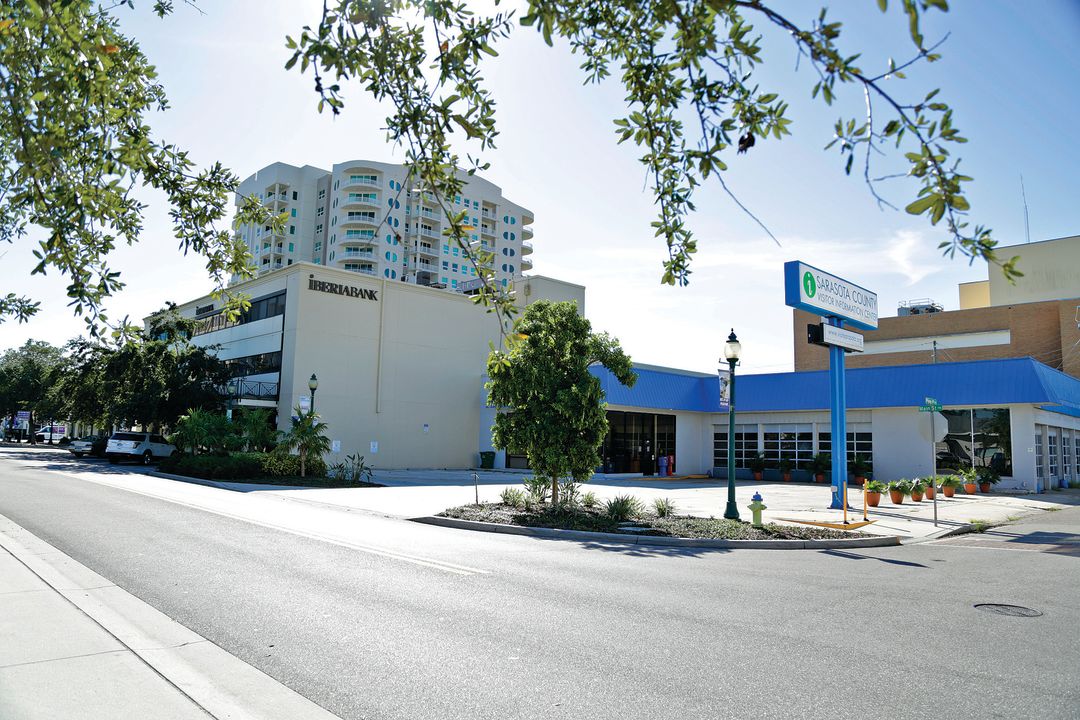
Brown owns the 1700 block of Main Street in Sarasota, which is ripe for redevelopment.
An advocate for density
Chris Brown’s ascent has not come without bruises. Between 2007 and 2011, he sued Sarasota County three times over disputes about parking for businesses on Siesta Key. The county settled all three suits, but the legal actions cost Brown far more than he won in settlements and delayed opening one of his restaurants. It also led to bruising battles with former County Commission chair Nora Patterson and Lourdes Ramirez, former president of the Siesta Key Association.
“A win is never truly a win in those situations,” Brown says. “It cost me.”
At their heart, Brown says, the battles were philosophical, pitting two views about how the area should evolve against each other. His critics contended that Siesta Key was already congested, and expanding parking, as Brown sought, would worsen the problem. Brown sees density as inevitable and, done right, better than sprawl.
“You’re not going to be able to stop growth; you have to manage it,” he says. “On Siesta, it’s time to look at a boutique hotel, a parking structure. Look at what Sanibel and Marco [islands] are doing, the revenue and jobs they are creating. It’s September and the 600 rooms at the Marriott on Marco are all booked. We should be getting that conference business. But we need the facilities to get them.”
Brown has made peace with the Sarasota County Commission, which he says has made a “180-degree turn” under new leadership. “It’s a more honest commission, one that isn’t so quick to say, ‘No,’” he says. “They’re listening to their staff’s recommendations.”
Now, moving downtown, Brown needs to learn a whole new set of players and rules at the Sarasota City Commission.
As he walks through the empty second floor above Fit2Run, Brown looks out the window overlooking Main Street. The view, even through dusty windows, offers a commanding sight of busy Five Points, contrasting with the stripped floors and barren walls. “That’s the money shot,” Brown says. “I have to figure out what to do with it, but the potential is incredible if the city will just have some imagination and foresight.”
That’s not his only concern. Soaring real estate prices are starting to make Brown nervous, not sell-everything-nervous like 2004, but concerned.
“It’s become fairly frothy, especially for the right locations,” he says. “But we’re still seeing 50 percent of buyers paying cash. That makes me want to explore more. Are they really paying cash or are they borrowing from somewhere else? I don’t know the answer.”
